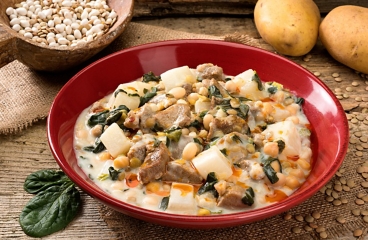This is a HealthLine Online content page created by Healthwise. HealthLine Online helps you make better decisions about your health.
Getting Enough Iron
Overview

What is the recommended daily amount of iron?
The recommended daily amount of iron varies. Most people need the following amount of iron each day.footnote 1, footnote 2
Group | Age | Amount of daily iron |
|---|---|---|
Adults | Ages 19 and older Ages 19 to 50 (who menstruate) | 8 mg. 18 mg. |
Pregnant | Ages 19 to 50 | 27 mg. |
Lactating (breastfeeding) | Ages 19 to 50 | 9 mg. |
Adolescents | Ages 9 to 13 Ages 14 to 18 | 8 mg. 11 mg. |
Children | Ages 1 to 3 Ages 4 to 8 | 7 mg. 10 mg. |
What foods are high in iron?
The foods you eat contain nutrients, such as vitamins and minerals. Iron is a nutrient. Your body needs the right amount to stay healthy and work as it should. You can use the list below to help you make choices about which foods to eat.
Here are some foods that contain iron. Most have 1 to 2 milligrams of iron per serving. Some have more. footnote 3
Fruits
- Apricots (dried), 1/4 cup (60 mL)
Vegetables
- Asparagus (raw), 6 spears
- Beet, Swiss chard, or turnip greens, 1/2 cup (125 mL)
- Snow or green peas, cooked, ½ cup (125 mL)
- Spinach, (cooked) 1/2 cup (125 mL)
Grains
- Cereals, fortified with iron, 30 g (1 oz)
- Oatmeal, instant, cooked, 3/4 cup (175 mL)
Meats and other protein foods
- Beans (kidney, lima, navy, white), cooked, 3/4 cup (175 mL)
- Beef or lamb, 75 g (2½ oz)
- Chickpeas (garbanzo beans), 3/4 cup (175 mL)
- Liver of beef, chicken, or pork, 75 g (2½ oz)
- Oysters (cooked), 75 g (2½ oz)
- Sardines (canned), 75 g (2½ oz)
- Soybeans (cooked), 3/4 cup (175 mL)
- Tofu (soft, firm, or extra firm), 3/4 cup (150 g)
Work with your doctor to find out how much of this nutrient you need. Depending on your health, you may need more or less of it in your diet.
References
Citations
- Dietitians of Canada (2022). Food sources of iron. Dietitians of Canada. https://www.pennutrition.com/KnowledgePathway.aspx?kpid=403&trid=29347&trcatid=467. Accessed February 14, 2022.
- Unger SL, et al. (2019). Iron requirements in the first 2 years of life. Paediatrics and Child Health, 24(8): 555–556. DOI: 10.1093/pch/pxz148. Accessed October 24, 2022.
- Dietitians of Canada (2022). Food sources of iron. Dietitians of Canada. https://www.pennutrition.com/KnowledgePathway.aspx?kpid=403&trid=29347&trcatid=467. Accessed February 14, 2022.
Credits
Current as of: September 20, 2023
Author: Ignite Healthwise, LLC Staff
Clinical Review Board
All Healthwise education is reviewed by a team that includes physicians, nurses, advanced practitioners, registered dieticians, and other healthcare professionals.
Current as of: September 20, 2023
Author: Ignite Healthwise, LLC Staff
Clinical Review Board
All Healthwise education is reviewed by a team that includes physicians, nurses, advanced practitioners, registered dieticians, and other healthcare professionals.
Topic Contents
This information does not replace the advice of a doctor. Ignite Healthwise, LLC, disclaims any warranty or liability for your use of this information. Your use of this information means that you agree to the Terms of Use. Learn how we develop our content.

